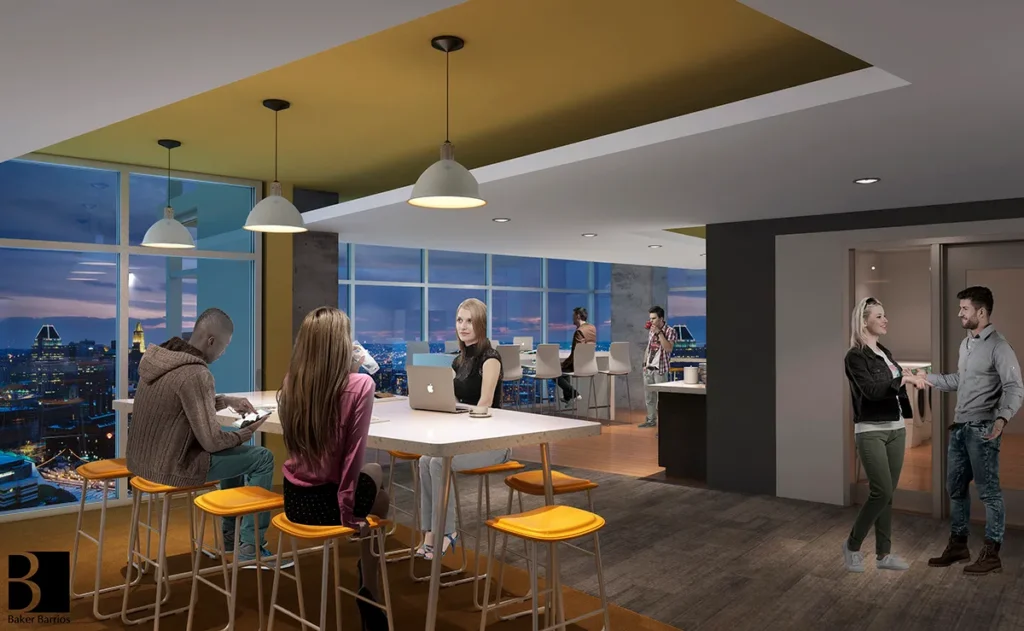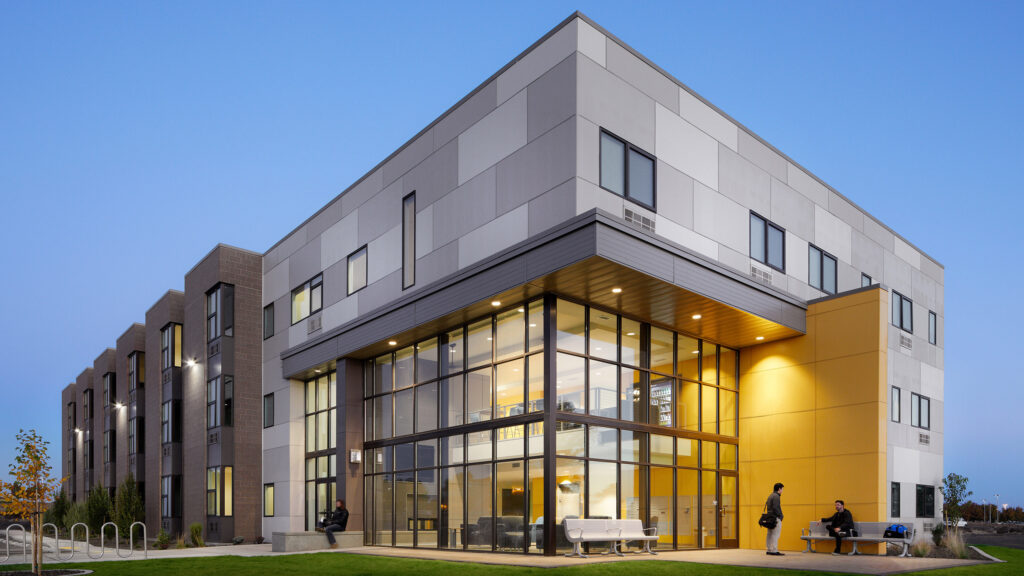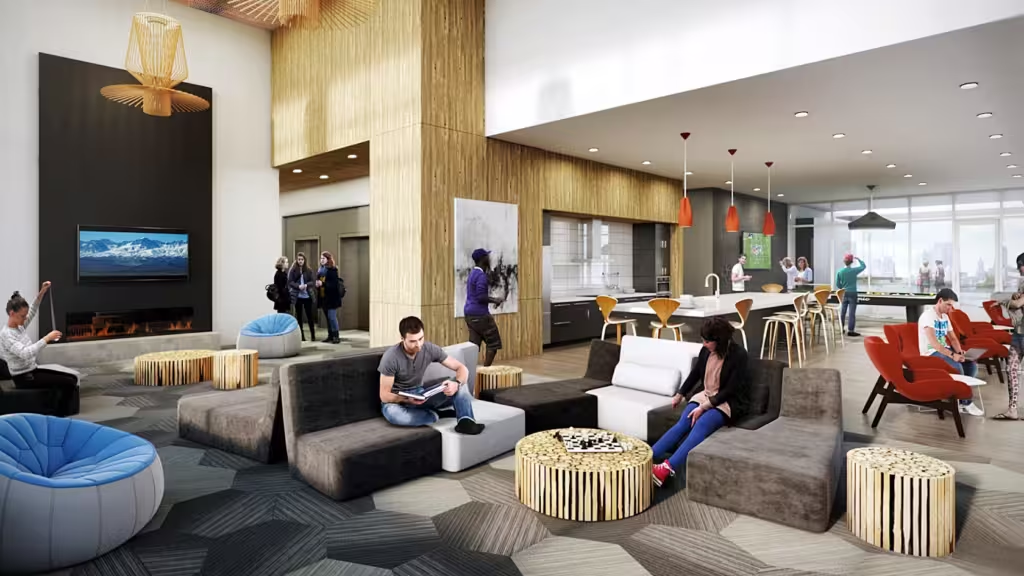Navigating the ever-evolving landscape of the student housing market in Piedmont requires a keen understanding of both its current state and emerging trends. Whether you’re a student seeking accommodation, an investor looking for promising opportunities, or a policymaker aiming to understand the economic and demographic impacts, the dynamics of this market can offer significant insights.
In this comprehensive analysis, we delve into the myriad factors shaping the student housing scene in Piedmont—from economic indicators and demographic shifts to technological advancements and regulatory frameworks.
Overview of the Piedmont Student Housing Market
My experience in the real estate sector gives me a distinct perspective on the current state of the student housing market in Piedmont. The market today shows a dynamic yet stable environment where demand from students remains consistent.
The influx of both local and international students to educational institutions in the area continues to drive a steady need for student accommodations. This consistent demand helps maintain healthy occupancy rates across various types of student housing options, from on-campus dormitories to off-campus shared apartments.
Current Market Conditions

The current market conditions reflect a robust interest in accessible and affordable student housing. The increase in rental rates has been moderate, ensuring that housing remains accessible to a broader demographic of students.
This is crucial as it ensures that students from varied economic backgrounds can find suitable accommodations without compromising on proximity to their educational institutions or access to essential amenities.
My analysis shows that the supply side is gradually adapting with new developments, although there is a notable lag in the availability of high-quality, affordable options which could be an area for potential growth and investment.
Comparison with Previous Years
Looking back over the past few years, there has been a significant transformation in the Piedmont student housing market. Previously, the market was characterised by a limited supply that struggled to meet the surge in demand, particularly during the start of academic sessions.
Recent years have seen a shift, with more purpose-built student accommodations coming into the market, easing previous pressures. These developments have not only catered to the basic needs of students but have also started to focus on creating community spaces, which improve both the quality of life and the overall student experience.
Projections for Future Trends

Moving forward, I foresee a trend towards more sustainable and technology-integrated housing solutions becoming predominant in the student housing market. The emphasis will likely be on creating smart homes that are both energy-efficient and equipped with the latest technology to support remote learning—a need that has become more pronounced in the post-pandemic era.
Additionally, there’s an emerging trend of co-living spaces that promote a more collaborative and community-focused living experience, which is particularly appealing to the new generation of students. These projections suggest a progressive evolution in the student housing market that could redefine how educational institutions and real estate developers approach student accommodations in Piedmont.
Factors Influencing the Piedmont Student Housing Market
As someone deeply involved in the real estate sector, I have observed several critical factors that significantly impact the student housing market in Piedmont. These factors range from economic conditions to advancements in housing technology, each playing a pivotal role in shaping the market landscape.
Economic Indicators Affecting Student Housing

The economic climate is a fundamental driver of the student housing market. Current economic stability or instability directly influences students’ ability to afford housing. In periods of economic growth, there is generally an increase in the rental market’s buoyancy, with more students able to afford higher-priced accommodations.
Conversely, in a downturn, there’s a noticeable shift towards more budget-conscious living options. Observing these trends helps me to tailor my offerings to meet the changing needs of the student population.
Impact of Local and National Educational Policies

Educational policies at both the local and national levels play a crucial role in shaping the student housing market. For instance, policies that increase the number of international students can lead to higher demand for student housing.
Changes in university admission policies or scholarship allocations also influence demand, as they determine the number of students moving to Piedmont for education.
Tuition Changes and Enrollment Rates
Tuition fees are directly linked to student enrolment rates. As tuition costs rise, fewer students may choose to enrol, which can reduce demand for student housing. Conversely, if local universities offer competitive tuition rates, this can attract a larger student body and increase the need for adequate student accommodations. Monitoring these changes is crucial for predicting housing demand accurately.
Government Subsidies and Support for Students
Government interventions, such as subsidies for student housing or financial aid for education, can alleviate the financial burden on students and increase their capacity to afford housing. In Piedmont, any increase in government support for students is typically mirrored by increased demand for student accommodations, as more students find it financially feasible to attend university.
Technological Advancements in Housing
The integration of technology into student housing is becoming increasingly prevalent and is a major factor influencing the market. Innovations such as high-speed internet, smart home technologies, and enhanced security systems are becoming standard expectations among students.
Properties that offer these technologies tend to attract a higher occupancy rate, as they align more closely with the digital needs of today’s students.
In short, understanding these factors allows me, Deepak Shukla, and my team at Pearl Lemon Properties to anticipate market shifts and adapt our strategies to continue providing excellent housing options for students in Piedmont.
Demographic Trends Shaping the Market
I’ve observed several key demographic trends that have a profound impact on the student housing market in Piedmont. These trends not only affect the types of housing that are in demand but also reflect broader changes in the student population itself.
Student Preferences and Needs
Today’s students are looking for more than just a place to sleep; they seek accommodations that enhance their lifestyle and academic performance. There is a growing preference for housing that includes study areas, high-speed internet, and communal spaces for socialising and relaxation.
Environmental sustainability is also a significant factor, with many students prioritising properties that implement green practices and technologies.
Demand for Different Types of Housing
The demand for various types of student housing has evolved significantly. While traditional on-campus dormitories remain popular, there’s an increasing demand for off-campus apartments that offer greater independence and privacy.
Studio apartments and shared housing options are particularly popular among postgraduate students who may require quieter environments for study and research.
Changes in Student Demographics
The demographics of students in Piedmont are changing. There’s been an increase in mature students and those undertaking part-time studies, which influences housing needs. These students often seek more permanent, apartment-style living solutions that differ from typical undergraduate accommodations.
Additionally, the rise in short courses and professional certifications has created a need for more flexible, short-term rental options.
International vs. Domestic Student Ratios
The ratio of international to domestic students has a significant influence on housing demands. International students often have different accommodation needs, such as more comprehensive onboarding experiences and a stronger community focus to help them settle into a new environment.
Properties that cater to these needs by providing a supportive community atmosphere and additional services like language support or cultural integration activities are particularly appealing.
Understanding these demographic trends is crucial for us, as it enables us to adapt our offerings to meet the changing needs of the student population in Piedmont, ensuring that we continue to provide relevant and sought-after housing solutions.
Geographic Impact on Student Housing
I consistently stress the importance of geographic factors in the student housing market in Piedmont. The location and its associated characteristics significantly influence both the demand and satisfaction levels of student accommodations.
The Role of Location and Accessibility
Location is paramount in student housing choices. Students seek accommodations that not only provide comfort and security but also offer easy access to their educational institutions and city amenities.
Housing that is centrally located and well-connected through public transport sees higher demand, as it contributes to reduced travel times and overall convenience for students managing busy schedules.
Proximity to Educational Institutions
Proximity to universities and colleges is a critical factor that students consider when choosing their accommodation. Properties located within walking distance or a short public transport ride from educational institutions are particularly attractive.
This proximity allows students more flexibility in their daily routines and can significantly enhance their academic performance by reducing commute times.
Transportation Options
Transport links are crucial for student accommodations, especially in areas slightly farther from educational campuses. Effective public transportation options, including buses, trains, and cycle paths, are essential.
They not only provide a lifeline to the campus but also to part-time job locations, leisure activities, and essential services, ensuring students can live comfortably without the need for a personal vehicle.
Neighborhood Safety and Amenities
Safety is a top priority for students and their families when selecting housing. A neighbourhood perceived as safe increases the desirability of student housing within it. Moreover, local amenities such as supermarkets, pharmacies, cafes, and leisure facilities enhance the attractiveness of an area.
These amenities not only cater to the students’ daily needs but also enrich their living experience, making certain neighbourhoods more popular among the student population.
Investment Opportunities in Piedmont’s Student Housing
My experience in real estate investment has highlighted several exciting opportunities within Piedmont’s student housing market. These opportunities are driven by solid market viability, promising returns on investment, and emerging hotspots.
Analysis of Market Viability
The viability of investing in Piedmont’s student housing market is strongly supported by ongoing demand fuelled by the area’s educational institutions. With a steady influx of both domestic and international students, the demand for student housing remains robust year after year.
This sustained demand, coupled with limited supply in desirable locations, creates a favourable environment for investors looking to enter the student housing market.
ROI Expectations for Investors
Investors can anticipate attractive returns on investment in student housing, primarily due to the high occupancy rates and consistent rental yields. Properties located near educational institutions and major transport links typically offer higher ROI, as they are most sought after by students.
Moreover, investments in buildings with modern amenities and sustainable features can command higher rents, further boosting profitability.
Emerging Hotspots for Investment
Identifying emerging hotspots for investment involves looking at areas experiencing growth in educational infrastructure or those undergoing significant urban development. These areas often present early opportunities for investment before they reach market saturation.
I keep my finger on the pulse of urban development plans and educational expansions to advise our clients on strategic investment opportunities.
Risks and Challenges for Investors
Investing in student housing also involves certain risks and challenges. Market fluctuations, changes in educational policies, and shifts in student enrolment can all impact the profitability of student housing. Additionally, managing student properties requires understanding unique needs such as higher turnover rates and seasonal vacancies. Investors must be prepared to manage these aspects effectively to ensure sustained success.
Through careful market analysis and strategic planning, I guide my clients to navigate these complexities, capitalising on the robust student housing market while mitigating potential risks.
This balanced approach ensures that our investment advice remains sound and profitable.
Regulatory and Legal Considerations
I emphasise to all potential investors and property managers the importance of understanding the regulatory and legal landscape surrounding student housing in Piedmont.
It’s crucial to comply with local zoning laws, understand tenant rights, and stay updated with recent legislation to ensure smooth operations and mitigate legal risks.
Zoning Laws and Building Codes
Zoning laws and building codes significantly impact where and how student housing can be developed. These regulations determine the types of buildings that can be constructed or modified in specific areas, which affects the availability and style of housing that can be offered to students.
For instance, certain areas might be zoned strictly for residential use, prohibiting the conversion of these spaces into multi-tenant student housing without a variance or rezoning approval. Compliance with building codes also ensures that the housing provided is safe and meets the minimum standards for habitability, which is paramount for maintaining the property’s value and ensuring student safety.
Rental Agreements and Tenant Rights
Understanding and drafting clear rental agreements that comply with local laws is fundamental. These agreements must transparently outline the rights and responsibilities of both landlords and tenants to prevent disputes and legal challenges.
Tenant rights in Piedmont are designed to protect students from unfair eviction, excessive rent increases, and other potential abuses, which means landlords must be meticulous in how they manage these agreements and interact with tenants.
Implications of Recent Legislation
Recent legislation can often bring about significant changes that affect the student housing market. For example, changes in rental cap laws or amendments in tenant rights can directly impact how property managers and owners operate their rentals. Staying informed about such changes is crucial.
I make it a point to monitor legislative developments closely and advise our clients accordingly, ensuring that they are not only compliant but also ahead of potential impacts on their investments.
Navigating these regulatory and legal considerations is essential for anyone involved in the student housing market. My role includes ensuring that all stakeholders are well-informed and prepared to meet these requirements, thus safeguarding their investments and the well-being of their student tenants.
Sustainability and Innovation in Student Housing
I’m committed to advancing sustainability and innovation within the student housing sector. Recognizing the growing importance of eco-friendly practices and smart technologies, we strive to incorporate these elements into our properties to meet the modern demands of students and to contribute positively to the community and environment.
Eco-friendly Practices and Buildings
Adopting eco-friendly practices in student housing is not just a trend; it’s a necessity. We focus on incorporating sustainable building materials and energy-efficient designs to minimise environmental impact.
This includes using recycled materials in construction, installing solar panels for renewable energy, and employing rainwater harvesting systems to reduce water consumption. Such practices not only help in reducing the carbon footprint but also significantly lower utility bills, making it economically beneficial for students.
Integration of Smart Home Technologies
The integration of smart home technologies is revolutionising student accommodations. By equipping properties with smart thermostats, energy-efficient lighting, and advanced security systems that students can control from their smartphones, we enhance both the convenience and safety of our accommodations.
These technologies not only improve the quality of living but also attract tech-savvy students who value connectivity and automation.
Community Initiatives and Social Responsibility
Community involvement and social responsibility are at the heart of our operations. We encourage and facilitate various community-driven initiatives such as local clean-up days, educational workshops, and community gardening projects. These activities not only foster a sense of community among students but also instil a spirit of social responsibility. We believe in supporting our students not just in their academic pursuits but in becoming conscientious members of society.
These sustainable practices and innovative solutions are key to making student housing more appealing, functional, and aligned with the values of today’s youth. I feel proud to lead the way in creating not just a place for students to live, but a space where they can thrive while being mindful of their environmental and social impact.
Market Predictions and Future Insights
Keeping a close eye on market trends and future predictions is integral to maintaining our competitive edge in the student housing sector. I regularly consult with experts and analyse data to forecast the direction of the market, ensuring that our strategies align with upcoming trends and potential disruptors.
Expert Opinions and Market Analysis
I engage with property experts and economists to gauge their insights on the future of the student housing market in Piedmont. These experts often discuss the influence of economic trends, demographic shifts, and policy changes on the housing market.
Their insights suggest a continued demand for student housing, propelled by increasing university enrolment and international student inflow. They also highlight the growing importance of flexibility and sustainability in student housing preferences, which is expected to shape future developments.
Data-Driven Predictions
Utilising advanced analytics, I analyse patterns in student enrolment, rental price trends, and property development to make informed predictions about the student housing market. The data indicates a steady rise in demand for properties that offer modern amenities and technology integration.
There is also a notable trend towards redevelopment of older properties to meet modern standards, suggesting that renovation could become a significant area of investment.
Potential Market Disruptors
Several potential disruptors could reshape the student housing market. Technological advancements, particularly in online education, could alter housing needs if more students opt for remote learning.
Additionally, changes in immigration policies may affect the number of international students seeking housing. Environmental factors and increasing urbanisation might also lead to shifts in where students prefer to live, impacting demand in traditional student areas.
By staying ahead of these trends and potential disruptors, I ensure that Pearl Lemon Properties remains prepared and proactive, adapting our offerings to meet the future needs of the student housing market.
This forward-thinking approach not only helps us manage risks but also capitalises on new opportunities as they arise.






